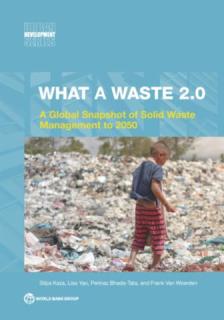
This report, What a Waste 2.0: A global snapshot of solid waste management to 2050, aggregates extensive solid waste data at the national and urban levels, estimates and projects waste generation to 2030 and 2050. Beyond the core data metrics from waste generation to disposal, the report provides information on waste management costs, revenues, and tariffs; special wastes; regulations; public communication; administrative and operational models; and the informal sector.
This report builds on previous World Bank publications from 2012 and 1999 titled What a Waste: A Global Review of Solid Waste Management (Hoornweg and Bhada-Tata 2012) and What a Waste: Solid Waste Management in Asia (Hoornweg and Thomas 1999). This current edition of What a Waste expands on the type of data collected and includes 217 countries and economies and 367 cities. The data are updated to recent years, and the waste generation data are scaled to a single year to allow for comparison across countries and economies. The projections for waste generation use the most comprehensive database available to date to determine how waste generation dynamically changes based on changes in economic development and population growth. The metrics included in this report expand from solid waste management generation, composition, collection, treatment, and disposal to include information on financing and costs, institutional arrangements and policies, administrative and operational models, citizen engagement, special wastes, and the informal sector.
What a Waste 2.0: A Global Snapshot of Solid Waste Management to 2050 targets decision makers, policy makers, and influencers globally, including local governments, international organizations, academics, researchers, nongovernmental organizations, civil society, and financiers. The aim of this report is to share objective waste management data and trends, as well as good and unique international practices, with the hope of improving waste management globally and enabling the optimal use of limited resources.
